What Is Digital PR?
Digital PR is a modern approach to public relations that focuses on building a brand’s presence across the web through online media coverage, journalist outreach, influencer engagement, and strategic content promotion. Unlike traditional PR, which might aim for newspaper columns or magazine spreads, Digital PR is centered on earning online visibility, where your audience already spends their time. The goal is to secure brand mentions and backlinks from high-authority websites, boosting both reputation and discoverability.
Why SEO Still Matters
Search engine optimization remains a critical pillar of digital marketing. It helps businesses get found by the right people at the right time. As search behavior evolves, SEO is no longer just about keywords or on-page structure — it’s about overall site quality, relevance, and authority. In Google’s eyes, the most trustworthy and useful content should appear first. That means brands need more than good content; they need signals that prove their expertise and credibility across the web.
The Connection Between Digital PR and SEO
Digital PR and SEO have become deeply interconnected. While SEO lays the groundwork through site optimization and content strategy, Digital PR adds the authority layer that search engines reward. When a brand earns coverage and links from trusted media outlets, it sends a strong signal to Google that the brand is reputable. These earned backlinks serve as a vote of confidence, boosting a site’s search rankings and paving the way for long-term organic growth.
What You’ll Learn in This Guide
This article explores how to utilize digital PR for effective SEO. We’ll walk through why it matters, how it works, and what steps you can take to implement a strategy that delivers real results. From identifying newsworthy content to building media relationships and tracking performance, this guide is designed to help you turn online coverage into lasting SEO gains — all in clear, practical language.
What is Digital PR?
1. A Simple Definition
Digital PR is a modern marketing strategy focused on increasing a brand’s online presence through coverage in digital media outlets, websites, and social platforms. It involves reaching out to journalists, editors, bloggers, and influencers to share stories, insights, or resources that are relevant to their audiences. The ultimate goal is to earn media attention that results in online mentions and links back to your website.
2. How Digital PR Differs from Traditional PR
While traditional PR aims to get coverage in print publications, television, or radio, Digital PR is entirely centered on the online world. It focuses on digital channels such as news websites, blogs, podcasts, and online magazines. Another key difference lies in the outcomes. Traditional PR often aims for brand visibility or reputation management in offline spaces, whereas Digital PR is designed to support digital growth, especially when it comes to search engine visibility and web traffic.
3. What Digital PR Aims to Achieve
At its core, Digital PR is about three main goals: earning high-quality backlinks, securing brand mentions, and building trust. Backlinks from reputable websites act as endorsements that can significantly improve your search engine rankings. Brand mentions across the web help reinforce your credibility, both with search engines and potential customers. And trust, which is built through consistent and positive online presence, plays a major role in long-term brand growth. Digital PR isn’t just about getting attention — it’s about earning authority that drives measurable results.
The Connection Between Digital PR and SEO
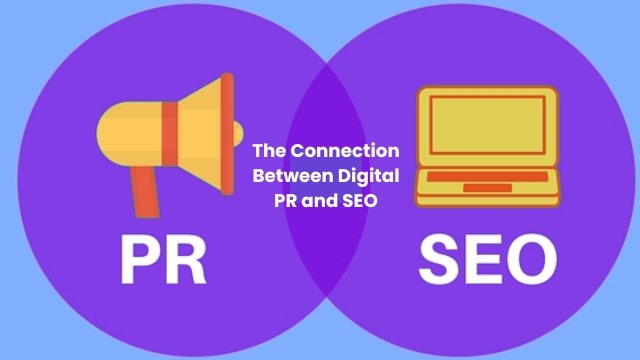
1. Domain Authority and Backlinks
One of the most direct ways Digital PR supports SEO is by helping you earn high-quality backlinks. When reputable websites link to your content, it signals to search engines that your site is trustworthy and valuable. These links increase your domain authority, which is a measure of how strong and credible your website is in the eyes of search engines. The higher your domain authority, the better your chances of ranking well for competitive keywords. Digital PR focuses on building these links naturally by getting your brand featured on respected digital platforms.
2. E-A-T: Expertise, Authority, and Trustworthiness
Google puts a strong emphasis on content that demonstrates expertise, authority, and trustworthiness — commonly referred to as E-A-T. Digital PR plays a big role in all three. When your brand is mentioned in reputable publications or quoted as a source by industry professionals, it strengthens your perceived expertise. Consistent, accurate coverage builds authority, while backlinks from trustworthy domains support the trust component. Together, these factors can positively influence how Google evaluates and ranks your site.
3. Referral Traffic That Matters
Beyond SEO rankings, Digital PR also drives qualified referral traffic. When people read about your business on a trusted website and click through to learn more, you’re reaching an audience that already has some level of interest or intent. This kind of traffic is often more engaged and more likely to explore your offerings. It’s not just about numbers — it’s about attracting the right visitors who are more likely to convert.
4. Google’s Algorithm and Link Signals
Google’s algorithm is designed to identify the most relevant and authoritative pages for any given search. One of the strongest signals it uses is the quality and relevance of backlinks pointing to your site. Not all links are created equal. A single link from a high-authority news site can have more impact than dozens of lower-quality ones. Digital PR focuses on earning the kinds of links that align with Google’s quality standards. By doing so, it helps improve your site’s visibility, credibility, and overall performance in organic search results.
Digital PR vs Traditional Link Building
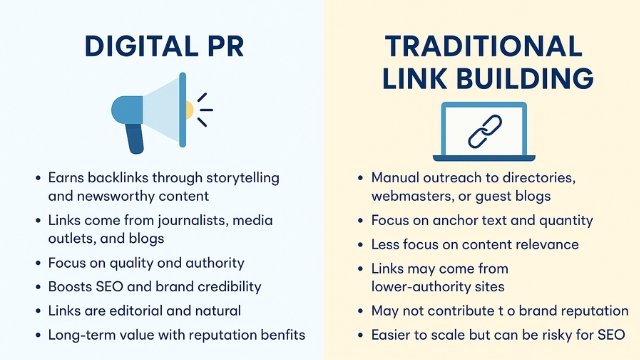
1. Understanding the Key Differences
While both Digital PR and traditional link building aim to improve search engine visibility by acquiring backlinks, the approach, quality, and long-term value they deliver can be quite different. Traditional link building often relies on manual outreach to website owners, directories, or guest posting opportunities to secure links. The focus is usually on quantity and anchor text optimization, with less emphasis on the context or authority of the linking site.
Digital PR, on the other hand, is built around storytelling and newsworthiness. Instead of requesting links, it earns them through content that gets picked up by journalists, bloggers, and media outlets. The goal is to gain natural, editorial links from high-authority websites — the kind that Google values most. It’s a more strategic and reputation-driven approach that not only supports SEO but also enhances your brand’s credibility and online presence.
2. Which Is Better for SEO?
In most cases, Digital PR offers stronger long-term benefits for SEO. The links gained from media coverage tend to come from reputable domains, which pass more authority and trust to your site. These links are also less likely to be flagged by search engines because they occur naturally within content, rather than being placed for the sole purpose of SEO. While traditional link building can still play a role, especially for local SEO or niche-specific placements, it often lacks the authority and reach that Digital PR can achieve.
3. When to Use Each Strategy
For brands looking to build serious domain authority and expand their online reputation, Digital PR is the more impactful choice. It’s especially useful for startups, SaaS companies, and e-commerce brands trying to stand out in competitive spaces. Traditional link building can still be useful in cases where you need links to specific pages, want to support technical SEO efforts, or are targeting a very specific audience. Ideally, both strategies can work together, with Digital PR driving high-value backlinks and traditional link building supporting broader SEO goals.
By understanding the strengths and limitations of each, you can build a smarter, more balanced SEO strategy that grows your visibility in a sustainable way.
How to Measure Digital PR ROI for SEO
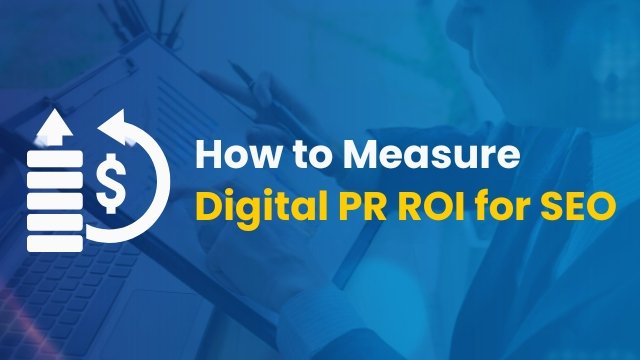
1. Tracking Backlinks and Link Quality
One of the clearest ways to measure the return on your Digital PR efforts is by monitoring the backlinks you earn from media coverage. Tools like Ahrefs, SEMrush, and Google Search Console allow you to see which websites are linking to your content, how authoritative those sites are, and whether those links are dofollow or nofollow. The quality and relevance of these links matter more than the quantity, especially when it comes to improving your domain authority and search rankings. Strong backlinks from trusted media outlets are a key indicator that your Digital PR campaign is working.
2. Monitoring Keyword Ranking Improvements
Another way to assess the impact of Digital PR is by tracking changes in keyword rankings. As your website gains more high-authority backlinks, you may notice that your content begins climbing higher in the search results for your target keywords. This is especially noticeable for competitive terms that previously seemed out of reach. SEO tools make it easy to monitor keyword performance over time and identify which pages are seeing the most improvement. A steady rise in rankings, particularly for valuable commercial keywords, suggests that your PR efforts are paying off.
3. Analyzing Referral Traffic and Brand Mentions
Beyond rankings and links, referral traffic provides another meaningful signal. When someone clicks a link to your site from an online article or media feature, that visit gets logged as referral traffic. These visitors tend to be highly engaged because they’re coming from trusted sources that have already validated your brand. You can track this traffic through Google Analytics or similar platforms, looking at metrics like bounce rate, session duration, and conversions to understand quality. Additionally, tools like Google Alerts, Brand24, or Mention can help you track brand mentions across the web, giving you a sense of how your visibility and reputation are growing.
4. Connecting PR to SEO Value
Ultimately, the goal of Digital PR for SEO is to improve visibility, authority, and organic performance. By combining data from backlink tools, keyword trackers, and web analytics, you can build a full picture of how each campaign contributes to long-term growth. The results may not be instant, but over time, you’ll see stronger rankings, higher domain authority, more relevant traffic, and a noticeable lift in your site’s overall performance. When done right, Digital PR is not just a visibility tactic — it’s a measurable investment in your search success.
Best Industries or Niches for Digital PR
Digital PR can be effective across almost any industry, but some niches tend to benefit more due to the nature of their content, audience interest, and potential for media coverage. SaaS companies, for example, often have access to unique data and insights that make great material for reports, thought leadership, or commentary. Because SaaS products usually solve specific business problems, they’re also well-positioned to contribute expert opinions and trends that journalists actively look for in tech and business publications.
E-commerce brands also find strong value in Digital PR, especially when launching new products, creating seasonal content, or tying into consumer trends. Media outlets are often interested in shopping behavior, product innovation, or lifestyle features — all of which can be leveraged for coverage. A well-timed campaign can bring in both backlinks and direct traffic from high-authority publications that highlight product categories or curated recommendations.
Fintech is another space where Digital PR thrives. The fast-moving nature of finance and technology creates constant demand for credible voices that can comment on regulation, innovation, and market shifts. Brands in this niche often gain traction by offering educational content, founder insights, or research-backed reports that earn links from business, finance, and tech media.
Other industries that consistently benefit from Digital PR include health and wellness, education, travel, and sustainability, especially when the brand can contribute expertise, case studies, or data around real-world impact. While the tactics may vary by niche, the core principle remains the same: provide value that media and audiences actually care about, and the SEO benefits will follow.
Cost of Digital PR for SEO
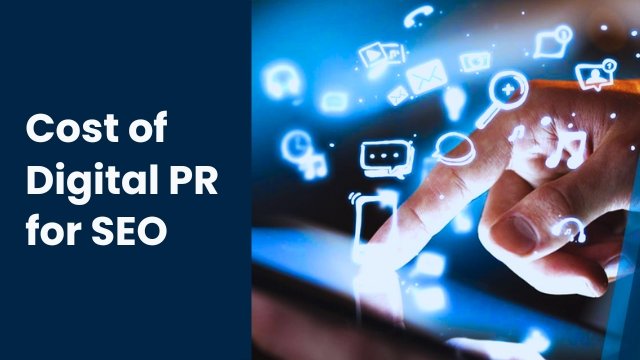
The cost of Digital PR for SEO can vary widely depending on your approach, goals, and whether you handle it in-house or work with an agency. On the lower end, small businesses or startups that manage Digital PR internally might spend anywhere from a few hundred to a few thousand dollars per month. This typically includes content creation, outreach tools, and time invested in building relationships with journalists or influencers. It’s a more hands-on and time-intensive route, but it can be cost-effective if you have a skilled marketing team.
For brands working with a PR or SEO agency, pricing is generally higher. Monthly retainers often range from $2,000 to $10,000 or more, depending on the agency’s experience, the scope of work, and the level of media targets involved. Agencies usually bring established media relationships, strategic planning, and campaign execution under one roof, which can accelerate results, but it comes at a premium. Some may also offer project-based pricing for one-off campaigns or seasonal pushes.
Several factors influence the overall cost, including the competitiveness of your industry, the quality of the content being promoted, and the types of publications you’re targeting. High-authority placements take more time and effort to secure, especially in crowded niches like tech or finance. It’s also important to remember that pricing doesn’t just reflect deliverables — it reflects the long-term value of backlinks, brand visibility, and search engine growth. Whether you go lean with a DIY approach or invest in professional support, Digital PR can deliver strong ROI when planned and executed strategically.
Digital PR Strategy Template for SEO
Creating an effective Digital PR strategy for SEO starts with identifying a clear goal and building every step around it. Begin by defining what success looks like — whether it’s gaining backlinks to a specific page, improving rankings for target keywords, or increasing overall brand visibility. Once the goal is clear, the next step is to find or develop a story worth sharing. This could be original data, a fresh perspective on a current topic, or content that adds value to an ongoing industry conversation. It’s important that the story connects with both your audience and the journalists or content creators you’re trying to reach.
From there, craft the content that will serve as the core asset. This might be a blog post, report, infographic, or landing page — something that journalists can reference or link to. Make sure the content is informative, well-designed, and optimized for search so it can stand on its own once people arrive. Then, research the right contacts. Build a list of relevant journalists, bloggers, or websites that cover your industry. Use media databases or platforms like Muck Rack and LinkedIn to find the best fit, and look at their recent work to tailor your pitch accordingly.
Outreach is the next critical phase. Your pitch should be short, personalized, and focused on the value of the story, not just the brand behind it. Be clear about why it’s relevant now and how it ties into the journalist’s beat or interest. If you don’t get a response right away, a polite follow-up a few days later can often make the difference. Once coverage starts to land, track every result. Monitor backlinks, brand mentions, and referral traffic to see how the campaign is performing. Compare keyword rankings before and after the campaign to measure its impact on search visibility.
Finally, take time to reflect on what worked and what didn’t. Every campaign is an opportunity to refine your process, build stronger media relationships, and improve results the next time around. A successful Digital PR strategy doesn’t have to be complex — it just needs to be consistent, targeted, and built on real value.
Digital PR Tactics That Improve SEO
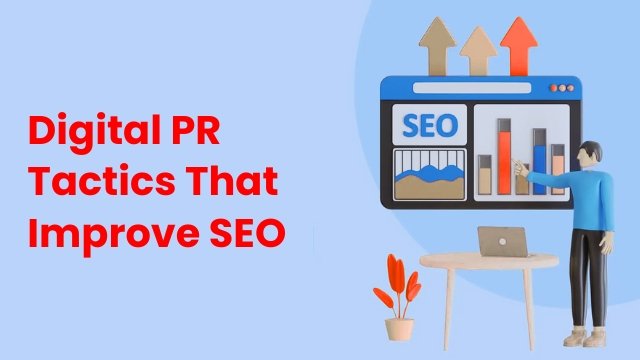
1. Press Releases
Press releases are one of the most traditional tools in PR, but when used strategically in the digital space, they can still play a strong role in SEO. A well-written press release that’s distributed through online channels can gain the attention of journalists, bloggers, and media outlets looking for stories. When picked up and published by credible sites, these releases often include backlinks to your website. The key is to make sure the content is truly newsworthy and relevant, not just promotional.
2. Journalist Outreach
Connecting directly with journalists is a core part of effective Digital PR. Platforms like India PR Distribution allow brands to share news and stories with relevant media contacts across various industries. By offering helpful, relevant insights to journalists working on tight deadlines, businesses can earn valuable media coverage and authoritative backlinks. Building genuine relationships with writers in your niche increases your chances of being quoted and linked to in future stories as well.
3. Newsjacking
Newsjacking is the practice of adding your voice or insight to trending news topics while they’re still fresh. If done thoughtfully and quickly, it can result in timely media coverage and backlinks. Journalists are often looking for expert opinions, data, or case studies to round out their stories. By staying on top of the news cycle and offering relevant commentary, brands can position themselves as valuable sources, leading to natural mentions in high-traffic online articles.
4. Thought Leadership Content
Publishing thought leadership content — such as opinion pieces, insights, or expert analysis — helps position your brand as a go-to resource in your industry. When this type of content is pitched to and featured by online publications, it not only builds credibility but often includes a backlink to your site. Beyond SEO, thought leadership also strengthens your brand’s voice, adds depth to your digital footprint, and makes it more likely that other sites will reference your work.
5. Data-Driven Campaigns
Campaigns built around unique data, surveys, or original research are especially effective for Digital PR. Journalists and content creators are always on the lookout for fresh, credible statistics to support their stories. When your brand becomes the source of that information, you’re likely to earn high-quality backlinks from media outlets and blogs that cite your findings. Data-driven content gives you a strong hook for outreach and often gets shared across multiple channels, boosting both visibility and SEO value.
6. Influencer Collaboration
Collaborating with influencers can also serve as a valuable Digital PR tactic for SEO when done strategically. While not every influencer post includes a backlink, many of them do — especially when the partnership includes blog posts, interviews, or co-created content on owned media platforms. These collaborations often extend your reach into new audiences while also increasing the chances of gaining links from reputable, niche-relevant sources. Over time, this layered approach builds brand authority and improves your site’s backlink profile.
Benefits of Using Digital PR for SEO
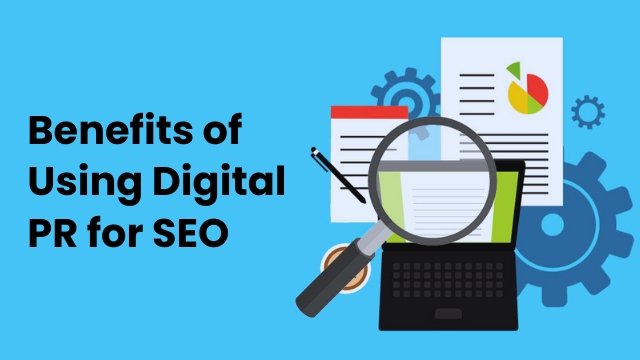
1. Organic Traffic Growth
One of the most valuable outcomes of Digital PR is the steady increase in organic traffic. As your site earns mentions and links from authoritative sources, it starts to rank higher for relevant search terms. That visibility leads to more people finding your content through search engines, often without the need for paid ads. Over time, this creates a sustainable stream of traffic that continues to grow as your backlink profile strengthens and your content reaches a wider audience.
2. Better Keyword Rankings
Digital PR directly supports your keyword strategy by enhancing the authority of your pages. When your site is linked from reputable publications, it gains more trust in the eyes of search engines. This trust improves your chances of ranking for the keywords that matter most to your business. Whether you’re targeting competitive industry terms or long-tail queries, the credibility earned through Digital PR helps push those pages closer to the top of the search results.
3. Increased Brand Credibility
Appearing in well-known publications or being quoted by journalists sends a strong message about your brand. It shows that you’re a legitimate and respected player in your space. This kind of third-party validation builds trust not just with Google, but with potential customers and partners as well. When people see your name associated with high-quality content or recognized media sources, they’re more likely to take you seriously and engage with your brand.
4. High-Quality Backlinks
The quality of backlinks matters far more than quantity. Digital PR focuses on earning links from respected, niche-relevant websites — the kind that influence search engine rankings. These aren’t links that can be bought or traded; they’re earned through valuable content, strong storytelling, and strategic outreach. Each high-quality backlink acts as a signal of trust and relevance, which helps boost your domain authority and overall SEO performance.
5. Media Coverage from Top Sites
Getting featured in top-tier publications is no longer out of reach, even for small brands. With the right Digital PR approach, your business can earn coverage from major outlets like Forbes, TechCrunch, or industry-specific platforms that your audience already trusts. This exposure not only brings a credibility boost but also drives targeted traffic and contributes significantly to your backlink profile. When search engines see your brand associated with these top-tier sites, it strengthens your reputation and supports stronger rankings across the board.
Case Study: How a Niche Tech Startup Boosted SEO with Digital PR
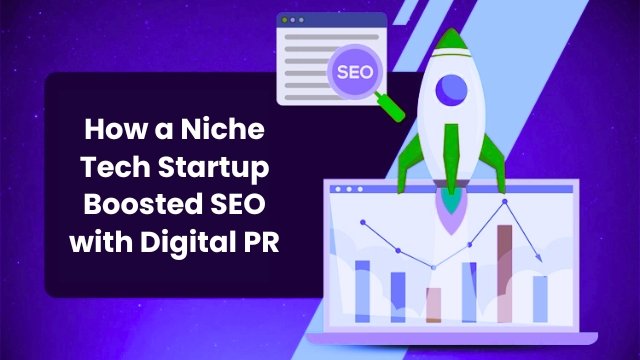
A growing B2B SaaS startup in the project management space was struggling to gain traction in search rankings despite having solid on-page SEO and a well-structured content strategy. Their blog was filled with helpful articles, but organic traffic remained flat, and they found it difficult to outrank more established competitors for even moderately competitive keywords.
To change course, the marketing team decided to invest in Digital PR. They started by creating a data-driven report based on anonymized user behavior trends from their platform. The report highlighted shifts in remote team productivity and offered insights backed by their own analytics. Instead of keeping this content gated or hidden on their blog, they turned it into a media pitch and began reaching out to journalists covering workplace trends and technology.
Within a few weeks, the story was picked up by several well-known online publications in the tech and business space. These articles linked back to the original report on the startup’s site, earning them multiple high-authority backlinks from domains with strong reputations in Google’s eyes. As the media coverage spread, the brand began seeing a noticeable uptick in organic traffic. Their main landing pages, previously stuck on page two of search results, started climbing into the top five positions for key industry terms.
Over the following months, the combination of new backlinks, improved authority, and referral traffic helped the startup more than double its organic traffic. Not only did their keyword rankings improve across the board, but they also saw an increase in demo requests and inbound leads, all without spending extra on paid ads. The Digital PR campaign proved to be a turning point, showing that with the right strategy, even a relatively unknown brand can compete and win in search.
Tools & Platforms to Use
Running a successful Digital PR campaign for SEO requires more than just good instincts — it also depends on having the right tools to guide your strategy, outreach, and measurement. Platforms like Ahrefs and SEMrush are essential for identifying backlink opportunities, analyzing your competitors’ link profiles, and tracking the performance of your own campaigns. These tools help you understand which websites are worth targeting and which pages on your site would benefit most from additional authority.
For discovering content ideas and monitoring trending topics, tools that track popular stories and industry conversations can be incredibly helpful. They allow you to see what type of content is gaining traction in your niche, making it easier to shape timely and relevant outreach strategies. When it comes to reaching journalists and distributing your news, India PR Distribution is a valuable platform for getting your stories in front of the right media contacts. It enables you to promote your press releases, build media visibility, and enhance your online presence with targeted distribution across Indian and global media outlets.
Together, these tools streamline the research, outreach, and analysis involved in Digital PR. While they don’t replace strategy or storytelling, they give you the data and direction needed to make smarter decisions and deliver better SEO results through earned media.
Common Mistakes to Avoid
One of the biggest missteps brands make when trying to boost SEO through Digital PR is buying links instead of earning them. While it might seem like a shortcut, paid links often come from low-quality or irrelevant sites and can hurt your search rankings in the long run. Search engines are smarter than ever, and they’re quick to detect unnatural linking patterns. Genuine backlinks earned through solid content and media outreach carry far more weight, and they’re far more sustainable.
Another mistake is treating outreach as a one-time transaction rather than building real relationships with journalists. Sending cold, generic pitches to dozens of contacts may yield a few responses, but it’s not an effective long-term strategy. Journalists are more likely to cover brands they know and trust. Taking the time to personalize your outreach, provide value, and follow up with useful content can lead to repeat coverage and stronger media connections over time.
A more technical but equally important issue is over-optimizing anchor text. When every backlink uses the exact same keyword phrase, it can raise red flags for search engines. It’s more natural — and safer — to vary your anchor text by using branded terms, descriptive phrases, or even generic language. The goal is to earn links that fit organically within the content they appear in, not to force specific keywords into every mention. Avoiding these common pitfalls can make your Digital PR efforts more effective and better aligned with Google’s quality standards.
How to Get Started with Digital PR for SEO
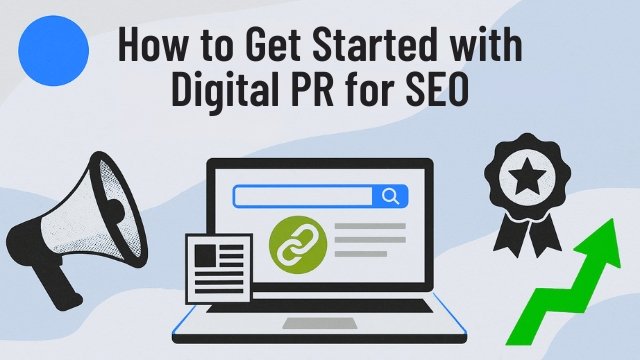
1. Step-by-Step Guide
Starting with Digital PR doesn’t require a huge team or complex tools — just a clear plan and consistent effort. The first step is to identify a story or angle that’s genuinely interesting to your target audience or industry. This could be a unique insight, internal data, or a fresh perspective on a trending topic. Once you have a strong idea, the next move is to create content around it, whether that’s a blog post, report, or landing page. From there, begin researching relevant journalists, bloggers, or websites that might find the story valuable. Craft personalized pitches that explain why your content is relevant to their readers, and offer any supporting materials that make it easy to cover your brand.
2. Tips for Beginners or Startups
If you’re new to Digital PR, start small and focused. You don’t need to aim for national media right away — local outlets, niche blogs, and industry newsletters can be just as powerful, especially when building initial authority. Be sure to track your outreach efforts so you can follow up politely and learn what works best. It’s also helpful to set realistic goals. Not every pitch will land coverage, and that’s okay. The process of refining your story and building relationships is just as valuable as the links you earn along the way.
3. Budget-Friendly Tactics
For brands working with limited budgets, there are still plenty of ways to run effective Digital PR campaigns. Free tools like Google Alerts can help you monitor relevant topics and identify timely opportunities. India PR Distribution offers a cost-effective way to reach journalists and media outlets, helping you distribute press releases and news without the high price tag of traditional PR firms.
Repurposing existing content, such as turning blog posts into data summaries or opinion pieces, can also save time and resources. Even simple actions like commenting on relevant discussions or collaborating with non-competing businesses for joint content can increase your chances of earning media attention. With creativity and consistency, Digital PR can become a powerful growth channel — no large budget required.
Final Thoughts
Digital PR has become one of the most powerful tools in the modern SEO toolkit. It goes beyond traditional link building by helping brands earn visibility, credibility, and high-quality backlinks through genuine media coverage. By connecting with the right journalists, publishing content that’s truly valuable, and consistently building your online presence, you’re not just improving rankings — you’re strengthening your brand’s entire digital foundation.
If you’ve been relying solely on technical SEO or content updates, now is the time to take action and explore the wider potential of Digital PR. Start by crafting stories that are worth sharing, building relationships with media contacts, and creating PR assets that showcase your expertise. Whether you’re running a startup or managing an established brand, these efforts can drive real, measurable growth.
At its best, Digital PR doesn’t just help you climb search engine results — it helps you earn a lasting reputation online. With the right approach, you’re not just chasing traffic; you’re building authority that compounds over time. Now is the moment to make your brand more discoverable, more trusted, and more talked about.
Frequently Asked Questions About Digital PR in SEO
Q1. What is Digital PR in SEO?
Answer: Digital PR in SEO is the practice of using public relations strategies to improve a website’s search engine performance. It involves earning online media coverage, backlinks, and brand mentions by promoting valuable, relevant content to journalists, bloggers, and digital publications. These earned links help increase a site’s authority in search engines, which can lead to higher rankings, more traffic, and greater visibility across the web. Unlike traditional PR, which focuses on offline exposure, Digital PR is designed specifically to support online growth and SEO outcomes.
Q2. Is Digital PR better than link building?
Answer: Digital PR and link building both aim to earn backlinks, but Digital PR takes a more strategic and long-term approach. Traditional link building often focuses on quantity, sometimes using outreach methods that prioritize link placement over content quality. Digital PR, on the other hand, emphasizes quality and relevance by earning links through trusted media sources, thought leadership, and compelling stories. The backlinks gained through Digital PR are typically more authoritative and natural, which makes them more valuable for SEO and brand reputation. In many cases, Digital PR is a more sustainable and effective way to build a strong link profile.
Q3. How long does it take to see SEO results from Digital PR?
Answer: The timeline for seeing SEO results from Digital PR can vary depending on your industry, competition, and the strength of your campaign. In general, most brands begin to notice shifts in organic rankings and traffic within a few weeks to a few months after successful media coverage and backlink acquisition. However, SEO is a long game, and the true impact of Digital PR often builds over time. As more high-quality links accumulate and your brand is mentioned across trusted websites, your site authority grows, leading to lasting improvements in visibility, keyword performance, and organic growth.
Q4. Can I do Digital PR for SEO without hiring an agency?
Answer: Yes, it’s absolutely possible to manage Digital PR in-house, especially for startups or small businesses with a lean marketing team. Many of the core tasks — like researching media contacts, crafting pitches, and creating content — can be handled internally with the right tools and a clear strategy. Platforms like India PR Distribution can support your outreach efforts by helping you connect with relevant media and distribute press releases effectively. While an agency can bring industry connections and polished execution, a well-organized internal team can still run impactful campaigns, particularly with a focused approach and a strong story to tell.
Q5. How is Digital PR different from content marketing?
Answer: Digital PR and content marketing both aim to build brand awareness and authority, but they focus on different parts of the process. Content marketing is centered around creating valuable content for your own channels — like blog posts, guides, or videos — to attract and engage your audience. Digital PR, on the other hand, is about getting that content featured or mentioned on external platforms, such as news websites, blogs, or industry publications. The two strategies work best together: content marketing provides the assets, while Digital PR amplifies them by securing third-party coverage and high-quality backlinks that drive SEO results.
Author Profile

- Nitin Jain - C.E.O - India PR Distribution
- Nitin Jain is the founder and C.E.O of India PR Distribution - India's top Press Release Distribution and PR Agency. Nitin has more than 20 years of experience in PR, Corporate Communications, Digital Marketing, Branding Strategy and Lead generation.
Latest entries
 Search OptimizationSeptember 16, 2025What Is Digital PR and Why It Matters for SEO Success
Search OptimizationSeptember 16, 2025What Is Digital PR and Why It Matters for SEO Success Press releaseAugust 14, 2025Press Release Distribution: How to Share Your News Effectively
Press releaseAugust 14, 2025Press Release Distribution: How to Share Your News Effectively Search OptimizationJuly 29, 2025Digital PR for SEO – The Ultimate Guide to Boosting Your Rankings
Search OptimizationJuly 29, 2025Digital PR for SEO – The Ultimate Guide to Boosting Your Rankings Press Release TipsJuly 24, 2025How to Do PR for Startup: 2025 Readiness Checklist
Press Release TipsJuly 24, 2025How to Do PR for Startup: 2025 Readiness Checklist

